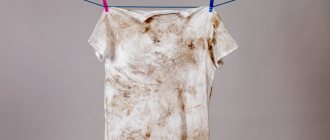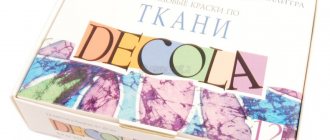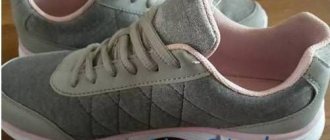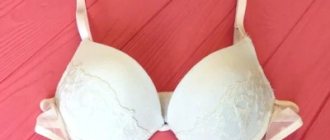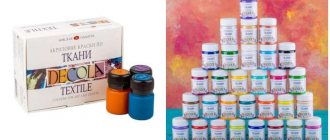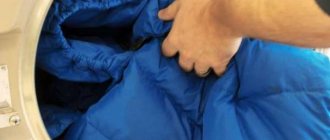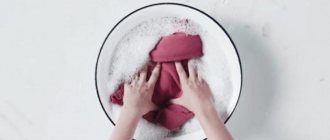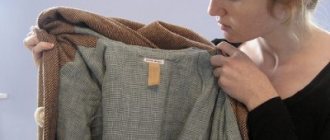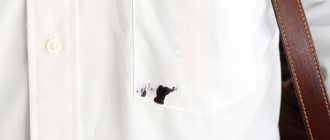A classic women's wardrobe is a white blouse. But despite the fact that this is a must-have, some fashionistas are ready to neglect such an item of clothing, because there is a lot of hassle with such things. The slightest spot is immediately noticeable on them, they quickly lose their dazzlingness, and the armpit areas turn yellow. It is very difficult to restore the original appearance; all that remains is to “write it off” and buy something new. And this takes a toll on your pocket.
But experienced housewives are not afraid of difficulties. In their arsenal there are a lot of folk ways to return things to the desired color. Here are the most effective ones for all types of fabric and all types of problems. In particular, you will learn how to bleach a white blouse at home if it has turned gray or yellowed.
How to whiten a white blouse with home remedies
Despite the abundance of bleach, which literally fills the supermarket shelves, it is very difficult to find a truly high-quality one. Many of them are effective only against minor stains. Some ruin clothes. Some are only suitable for certain types of fabric.
You can, of course, browse forums for reviews or test the effectiveness of bleach experimentally. But if the thing is expensive, you don’t want to take risks. The best solution is traditional methods, proven over decades, or even centuries. Here are the simple, effective and cheap fighters for radiant whiteness. They are easy to use, especially with the instructions that come with the video.
Manganese and powder
Potassium permanganate, better known to the general consumer as potassium permanganate, together with regular laundry detergent, works wonders:
- Fill the container in which you will soak white items with warm water.
- Add a few crystals of potassium permanganate. Just add a couple of grains of sand at a time and stir so as not to overdo it. The result should be a pale pink solution.
- Pour a little washing powder into the same container. It can be replaced with shavings of laundry soap.
- Soak a white blouse in the solution and leave it covered until the water cools completely. After this, rinse and dry the items.
Tip : use a white bucket or basin for soaking. This will make it more convenient for you to determine by eye the desired concentration of the solution.
Soda with hydrogen peroxide
These available tools are just as easy to use as the previous ones. And if you don’t know how to return the whiteness to a shirt, start with them.
- You need to prepare a solution based on warm water. For 1 liter you will need 1 tsp. soda and half a teaspoon of peroxide.
- Immerse white items in the solution and leave for an hour.
- After this, rinse and dry.
Important : do not add any other products when soaking, especially store-bought bleaches. They can enhance the effect of these substances, and the result will be the opposite: the fabric may turn yellow.
Laundry soap
Previously, in the fight against any stains, they used only this product. And now he has been unfairly relegated to the background. And in vain, because ordinary laundry soap, the same one with the inscription “72%,” can perfectly whiten any thing.
It's simple:
- Moisten the product, rub it liberally over the entire area with laundry soap and leave to soak for 3 hours. At the same time, a little water is poured into the soaking container, but the item should completely sink in it.
- Afterwards, wash your clothes thoroughly, rinse thoroughly and dry.
Boric acid
This pharmaceutical product is effective not only for refreshing the white color of clothes, but also for removing the most insidious stains, even old ones, that other substances cannot cope with.
Housewives use it to bleach such problematic items as a child's school shirt, which usually by the end of the day has stains of various origins and any degree of complexity, especially on the sleeves.
You need to prepare a solution at the rate of 10 g of acid per liter of warm water. Soak the items to be bleached in it for a couple of hours, and then wash them in a machine or by hand using powder. There will be no trace of stains left, and the fabric will simply shine.
Aspirin
A cure not only for diseases, but also for stains, grayness and yellowness. Acetylsalicylic acid simply has no equal in the fight against biological stains: stains from blood, sweat. You can use aspirin for bleaching when washing either by hand or in a machine.
If you need to get rid of stains or the item is no longer perfectly white, you will need to hand wash it. To do this, dissolve 5 tablets of acetylsalicylic acid in three liters of warm water. Soak the items and leave them overnight. Wash it the next morning.
If the blouse has just begun to turn gray or yellow, aspirin during machine washing will be sufficient. To do this, grind two tablets into fine crumbs and add to the powder.
Tip : if you need to get rid of particularly difficult stains, crumble a few tablets and add just a little water to make a paste. Rub it onto the stains and leave for a couple of hours. Then wash your clothes.
Turpentine
Just a note: this product can only be used on cotton items. A white lace blouse and delicate silk underwear are guaranteed to be ruined by turpentine.
This product is easy to use: dissolve it in warm water in a ratio of 1 tbsp. per 1 liter. Immerse the laundry in the composition and leave for 3 hours. Wash it afterwards.
Table vinegar
It is good not only for whitening clothes, but also for softening fabrics. Acid neutralizes the harmful effects of hard water on things.
If white clothes are just starting to turn yellow or gray, just add a glass of vinegar to the basin when washing. And if the item requires more thorough bleaching, soak it in water with the same amount of vinegar added overnight, and then rinse and dry.
Alcohol
Even alcohol-containing clear liquids can be used as bleach. True, you will need an auxiliary agent - glycerin.
The bleaching solution should be quite concentrated: combine vodka and water in a 1:1 ratio and add 300 g of glycerin to them. Leave grayed items in this solution for 2-3 hours, and then wash them using washing powder in a machine or by hand.
Tip : Vodka with glycerin can be used as a stain remover. To do this, mix them in a 1:1 ratio and apply to the stain. After half an hour, wash the item.
Lemon acid
This product acts in the same way as vinegar: it whitens and softens. Citric acid is well suited for knitted blouses, linen shirts, silk blouses - for almost all types of fabrics.
- In the basin where you will bleach your clothes, dissolve a small amount of washing powder and add two tablespoons of citric acid.
- Soak a blouse or other item that needs to be restored to its original whiteness in the resulting solution for two hours.
- After this time, machine wash the clothes on a cycle appropriate for the type of fabric.
Toothpaste, citric acid and salt
This combination of components gives an amazing result: clothes not only shine like new, but also smell fresh.
To make homemade bleach, you will need a tube of toothpaste (without dyes), 100 g of baking soda, 50 g of salt and 40 ml of vinegar. Mix all ingredients.
When it stops fizzing, dilute with water. The less it is, the better, but there should be enough liquid so that the items to be bleached can be moistened with it. They should soak in the solution for two hours. After that, put them in the washing machine.
Tip : Using toothpaste, you can restore the whiteness of crocheted lace. In this case, you will also need oxygen bleach. Prepare a solution: one tablespoon of each product per liter of water. Soak the lace for an hour and then rinse.
Ammonia and hydrogen peroxide
This method of whitening is also simple and effective. And it requires only 40 ml of ammonia and the same amount of peroxide.
This amount of active ingredients should be dissolved in about 10 liters of warm water and soak snow-white items in it for only half an hour. After that, wash them by hand or in a machine. Fast and easy.
Salt
And it can be even simpler: ordinary salt, which we use to season food, is also a good bleach, safe for all types of fabric.
Prepare a saline solution at the rate of two tablespoons per liter of warm water. Soak your blouse in it for just 20 minutes, and then rinse.
Powdered milk
Housewives do not often use this product as a bleach because, unlike soda, salt, vinegar or peroxide, it is not always available in the house. But if you happen to have it at hand, you can try it.
Fill a bowl with warm water, add a glass of powdered milk and stir until completely dissolved. Soak white items for an hour and then wash.
Ammonia
This product works best on yellow spots. But the main advantage of ammonia is that it has no effect on dyed fabrics, so you can safely bleach even a blouse that has colored inserts.
Fill a container with warm water in an amount of about 5 liters and pour 60 ml of ammonia into it. Leave things in this solution for 3 hours, then wash.
Washing and drying rules
You cannot wash knitted items like regular clothes. Products are subject to deformation, which affects their appearance. Therefore, you should be more careful when washing and drying such blouses, blouses and sweaters.
If hand washing is used to clean a knitted item (the most effective method), then it should be done according to the following step-by-step steps:
- Cool water is poured into the basin.
- The detergent is dissolved, soda is added to make the product softer.
- Immerse a sweater, jacket or other similar item in the solution and leave for 2 minutes.
- You cannot rub knitwear. It is better to take the product with your hands and start squeezing and unclenching the clothing with your palms. Movements are carried out along the product so as not to deform it.
- After all manipulations, clothes must be rinsed thoroughly to remove the soap. The water should be at the same temperature during washing and rinsing.
The product cannot be wrung out. Just squeeze it slightly to get rid of the water.
You should know! It is not recommended to use hangers to dry products, or hang them on clotheslines. Otherwise, the weight will stretch the fabric and lose its quality.
Dry knitted clothes on a wire rack. Before doing this, you can spread a towel on the table surface, put clothes on it, and then roll it up and squeeze out the excess water.
When washing a knitted item in a washing machine, the following rules apply:
- To wash items, set the “Delicate Wash” mode. Some washing machines offer a choice of washing for wool or silk;
- Before putting things into the drum, buttons and zippers are fastened. Clothes are turned inside out;
- They use a special cover that will help protect the fabric from damage;
- You can't wash too many things at once. As the drum rotates, they will become entangled with each other. This will entail their deformation;
- The maximum water temperature is not set above 40°. If you cannot do without the “Spin” mode, then reduce its speed to a minimum in order to reduce the damage caused to the product.
Bleaching by fabric type
It turns out that there are a lot of folk methods. This is not a complete list; the most popular and accessible ones are collected here. But do not forget that white clothes are made from different materials: silk, wool, linen, cotton, polyester.
And the means described above are not at all universal. And before you start bleaching, you need to figure out what type of fabric is in front of you and what can be used on it and what is strictly prohibited.
Synthetic fabrics
Lavsan, fleece, acrylic, polyester and other fancy names. If you know that your white blouse is made of artificial materials, remember the main rule: temperatures above 40 degrees do not apply to them. So any bleaching should only be done in warm water.
To return synthetic items to their original appearance, you can use the following means :
- peroxide;
- boric acid;
- potassium permanganate;
- table salt;
- ammonia;
- soda
Important : if you use store-bought products for synthetics, choose only those that do not contain chlorine. They will cause the fabric to turn yellow.
Silk
A white silk blouse, beautiful underwear, luxurious bedding - for such things they often use fabric that is considered royal and requires appropriate treatment. Therefore, it is impossible to bleach it with harsh products containing chlorine.
Before proceeding to the process, the silk product must be rinsed in warm water. Do not rub, wrinkle or twist the fabric. It does not tolerate rough mechanical impact.
products are suitable for whitening silk items :
- hydrogen peroxide;
- sea salt;
- ammonia;
- baking soda;
- lemon acid;
- natural citrus juice.
Lemon juice should be used as follows. For 1 liter of water you will need 2-3 fruits. Squeeze them into warm water and soak the silk item overnight. This will not only make it whiter, but also refresh it. The method of using other means was discussed above.
Advice : if you have the desire and opportunity to use store-bought products for whitening, pay attention to powders and gels based on thiourea dioxide. These include “Diola”, “Rime-2”, “Universal”, “Lily-3”.
Wool
Washing items made from this material requires compliance with strict rules. Remember: no aggressive ingredients, forget about high temperatures and intense spinning.
Of all the home remedies for whitening described above, the following are applicable to wool products:
- hydrogen peroxide;
- soda;
- lemon acid;
- ammonia;
- salt;
- chalk.
If the use of the first five means has already been discussed, then we need to talk about the last one in more detail. To use it to bleach a woolen item, make powder or crumbs. Prepare a solution at the rate of: a kilogram of chalk per 3 liters of warm water.
Soak a white woolen item for an hour, and then rinse with a special softening conditioner.
If there are serious stains on a woolen item that folk remedies cannot remove, you can use white, but this must be done extremely carefully.
You should prepare a solution of very weak concentration: only 50 ml of whiteness per 8 liters of water. Soak your clothes in it for half an hour, then rinse and dry.
Cotton and linen
Cotton and linen are quite durable fabrics. This is exactly the case when it is possible, and sometimes even necessary, to use aggressive whitening agents. The only caveat: you cannot treat linen and cotton items with chlorine-containing bleaches too often.
To return a cotton or linen product to its original boiled color, dilute 100 ml of white in 10 liters of water and soak the items for an hour. After this, machine wash at high temperature.
Important : Do not use chlorine bleaches on children's clothing and bedding.
Linen and cotton items can be bleached using the following means :
- ammonia;
- turpentine;
- blue;
- vinegar;
- peroxide;
- potassium permanganate.
Types of bleaches
All factory-produced bleaches can be divided into three types:
- products containing chlorine (these are the classic “Belizna”, “ACE”, “Chlorin” and others). This is the most aggressive chemical component that gives quick results. Such bleaches must be used with caution, since under the influence of the active component the fibers are gradually destroyed,
- oxygen bleaches (this category includes “Persol”, “Vanish” and other products that do not contain chlorine). The active component here is oxygen. These bleaches work in warm water and can be used on white blouses with colored inserts,
- optical brighteners. They do not remove stains from the fabric, but leave particles on it that visually make it lighter. These substances are called y, “blancophores”, “heliophores”, but the essence is the same.
How to wash your armpits
Almost every product is used like this: it is diluted in water, and then things are soaked in this solution. But there are many difficult stains that need to be treated locally. Particularly problematic on white tops, blouses, sweaters, T-shirts, etc. The armpit areas are considered: sloppy yellow spots will ruin even the most beautiful look.
A word of warning: Chlorine bleaches are not effective in removing sweat stains. These are contaminants of biological origin, and chlorine, reacting with proteins, will not whiten the stain, but will make it even darker and more noticeable.
Important : do not wash items stained with sweat at high temperatures. Hot water “fixes” the stain on the fabric, making it even more difficult to remove.
Not only does sweat, penetrating deeply into the fabric fibers, leave unsightly marks and be difficult to wash out, but it also gives things an unpleasant odor that even the strongest-smelling powders and conditioners cannot remove.
Therefore, an important recommendation: if you happen to sweat a lot in some item, it is better to wash it immediately upon returning home, and not throw it in the dirty laundry basket, waiting until the sweat is thoroughly ingrained into the fabric.
But if the “train has left” and the item is already damaged, use simple methods for removing sweat stains at home:
- Laundry soap. Soak the item in water, rub the armpits with a bar of soap and leave for 20 minutes. After that, wash by hand or in a machine at 30 degrees.
- Hydrogen peroxide, dishwashing gel and soda. From these components, prepare a mixture in the following proportions: 3 parts peroxide, 2 parts soda and 1 part dishwashing detergent. Mix until smooth, apply to stains and scrub lightly with a soft brush. Leave for an hour. Then wash the item.
- Acetylsalicylic acid. Grind the package of aspirin tablets into powder, add a little water to it to make a paste, but not too thick. Apply it to the yellow marks under the arms and leave until completely dry. Wash your clothes afterwards.
- Salt, soda and liquid soap. Mix them in equal proportions to make a paste. Apply it to sweat stains and leave for half an hour. Then wash the item by hand or in the machine.
- Vinegar. Generously moisten the underarm areas of the item to be bleached with 9% vinegar and leave for 15 minutes, and then wash with regular powder.
- Ammonia and salt. Dilute 20 ml of ammonia and 20 g of table salt in 200 ml of water. Treat the contaminated areas with the resulting solution and wash the item after half an hour.
Tip : some of the above remedies (ammonia, vinegar and aspirin) can also be used to remove sweat stains from dark things, as well as eliminate unpleasant odors.
Prevention of yellow spots
Yellow marks on clothing can be caused by more than just sweat and deodorant. Yellowing is caused by violation of washing and ironing rules, hard water, and improper storage.
Washing, drying and ironing according to the rules
To prevent yellow stains from appearing on your clothes while caring for them, do the following:
- do not overload the washing machine;
- select a washing mode with additional rinsing;
- do not add more washing powder and bleach than recommended in the instructions;
- Wring out your laundry thoroughly before hanging it to dry;
- Set the iron setting according to the type of fabric.
These simple rules will help keep things white longer.
Water softening
Hard water causes soap scum to form. To prevent the problem, use water softeners for washing machines, for example, Calgon 2 in 1, or wash with powders that contain softeners - Persil, Ariel.
How to restore the original appearance of a white item that has faded color
High-quality dyed fabric should not fade. But it is still recommended to wash white items separately from the rest.
No matter how hard you try, sometimes incidents happen and some, say, red, blue or green thing gets into the whites and gives them an undesirable shade. Usually housewives, having discovered this, give up on the damaged item. But while she is wet, you can try to save her. Act immediately.
Important : if you find that a colored item has faded on a white item, do not dry it immediately after washing, otherwise the paint will penetrate deep into the structure of the fabric and adhere there securely.
Here are some ways to bleach clothes that have picked up color from dark items:
- Repeated washing. As soon as you find a “surprise,” put the item back in the machine and run the program at 60 degrees with bleach. But this is only suitable for non-capricious fabrics.
- Boiling with hydrogen peroxide. Again, this only applies to materials such as cotton or linen. Pour a bottle of peroxide into a basin, soak the item and boil for half an hour. Then rinse and dry. The product can be replaced with ammonia.
- Starch, salt and citric acid. Mix one tablespoon of each product, dilute it in a small amount of warm water and soak the damaged item for 12 hours. Rinse afterwards.
- Lemon juice. It is effective if the item of clothing is not completely colored, but in places. Apply the juice generously to the stains and leave for 3-5 hours. Then wash it.
- Potassium permanganate. Prepare a weak solution so that the water has a pale pink tint, and immerse the item in it for half an hour.
- Turpentine is acceptable when working with cotton fabric. Prepare a solution at the rate of one tablespoon of turpentine per liter of warm water. Soak things in it for 3 hours.
How to keep something white for a long time
In order not to suffer and not to carry out all the manipulations described above, and not to rack your brains on how to bleach your favorite blouse or other thing, you need to make sure that it remains white for as long as possible.
To do this, it is important to follow simple rules of care:
- Wash separately. Do not allow colored items to get into the machine. If white clothes have inserts of some bright shade, it is better to wash them by hand.
- Follow the correct washing cycle. Protect delicate fabrics from high temperatures. On the contrary, wash cotton and linen only at 60 degrees.
- Store separately. Make sure that even when dry on a shelf in the closet, white things do not come into contact with colored ones.
- React to contamination promptly. As soon as you notice a stain, take action immediately.
- Use bleach for prevention. Keep a supply of all-purpose cleaner and add a little each time you wash.
- Arrange periodically scheduled procedures. Even if things shine white, periodically carry out bleaching activities, otherwise they will turn gray. You can use some of the home remedies. For example, sometimes soak things in water with the addition of vinegar, soda, salt, or lemon juice.
- Dry it properly. Do not hang white items in direct sunlight, as ultraviolet radiation has a detrimental effect on the fabric, as a result of which it can turn yellow in a short time.
Don't be afraid of white things. They are not disposable at all, as many believe, and are intended not only for special occasions, but also for everyday wear. The main thing is to properly care for them and immediately “save” them if the item has lost its original appearance.
- First, when bleaching, always consider the type of fabric and choose products accordingly.
- Secondly, eliminate the problem based on its nature: for yellow sweat stains - one solution, for faded dirt - another.
- Thirdly, try to prevent the situation so that you don’t have to correct it later.
Now you know how to return the whiteness to a white blouse, or any other light-colored clothing, so be sure to add it to your wardrobe and wear such things with pleasure!
Did you like the article? Save it to your Pinterest! Hover over the image and click “Save.”
Why do spots appear?
Yellow stains on white clothes are formed for the following reasons:
- wash in hard water;
- incorrect choice of temperature during ironing;
- ingress of fatty substances;
- using cheap perfume;
- active sweating;
- use of unsuitable laundry detergents or aggressive bleaching agents;
- long-term storage in a room with high humidity;
- insufficient drying, after which things end up in the closet damp.
